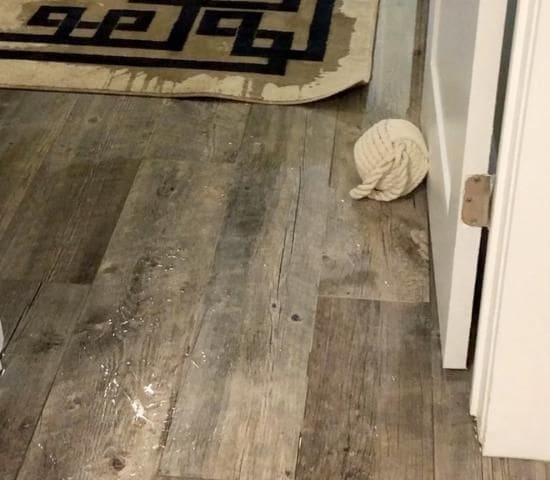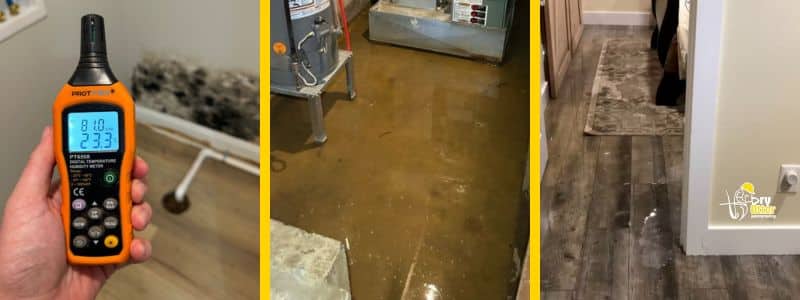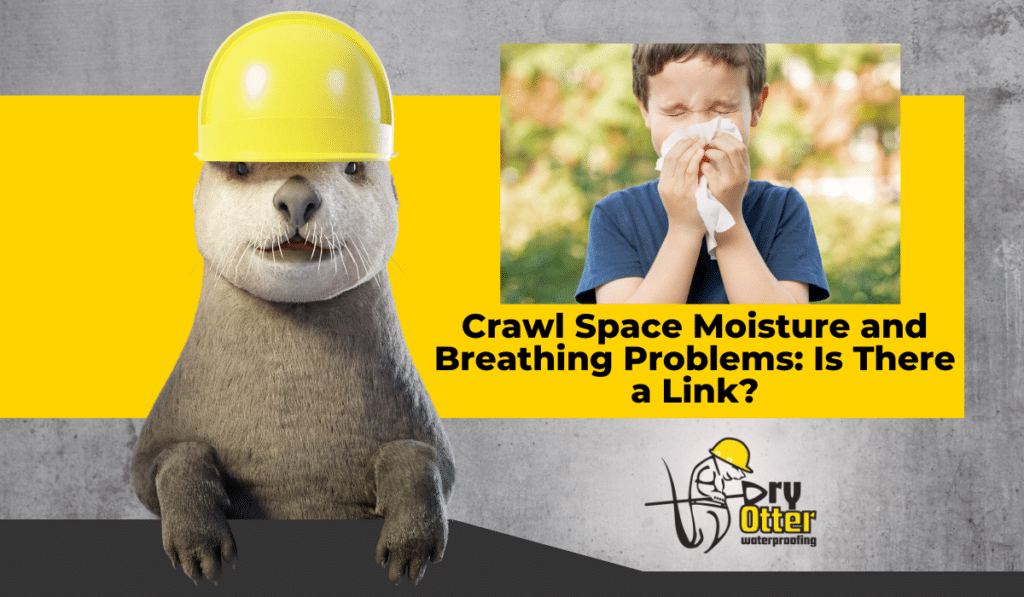A wet basement is a common and persistent headache for homeowners. Whether it’s small damp patches or a full-blown flood, water intrusion can lead to significant damage and even mold growth, which can pose health risks.
Understanding the seriousness of this issue is the first step towards prevention because cleaning up a wet basement is not enough; understanding wet basement causes is the only way to prevent the problem long-term.

Common Causes of Wet Basements
Hydrostatic pressure: When water pressure builds up in the soil, leaks can happen.
Poor drainage: Ineffective gutters and poor landscape grading can lead to water pooling around your foundation.
Cracks and openings: Even tiny cracks can allow water to seep in, which is one of the wet basement causes.
Specific Causes of a Wet Basement Floor
- Capillary action in concrete: Capillary action can significantly impact the moisture levels in your basement. Concrete looks solid, but it is very porous. It contains tiny air pockets that are like a tiny framework of tunnels.
When the ground around your basement becomes saturated with moisture, water is drawn toward your drier concrete. This draw is called capillary action. This action moves water into your concrete, reaching the surface of your basement floor, leading to dampness, puddles, and even severe water infiltration.
- Floor-to-wall joint leaks: These are common points that are vulnerable to leaking because they are where the floor meets the foundation walls.
Diagnosing Your Wet Basement Causes
There are ways to identify each type of water intrusion.
Capillary Action:
Moisture pattern: If the moisture is capillary action, it will be evenly distributed across the basement floor. You might notice general dampness or puddles across the whole floor.
Visible water source: There won’t be a specific water entry point. The water will be drawn upwards through the concrete from the saturated soil, one of the leading causes of a wet basement floor.
Timing: Basement water from capillary action could worsen after heavy rain or snowmelt periods as the ground becomes more saturated.
Efflorescence: You may also see a white, chalky deposit called efflorescence on your basement floor or walls. This is caused by capillary action, which carries dissolved salts into the concrete and deposits them on the surface as it evaporates.

Floor-wall joint leaks:
Moisture pattern: Leaks at a joint where the floor meets a wall usually cause a concentrated area of moisture along the base of your wall. You may even see water stains or dripping water in these areas.
Visible water source: With this type of leak, you should see a specific point of entry for the water. It could be a crack in the foundation wall, gaps around pipes or utility lines that enter the basement, or faulty waterproofing membranes.
Timing: Floor-wall joint leaks might not be linked to recent rainfall or snowmelt. They could occur when water finds a way to enter through cracks and gaps in your foundation.
Mold growth: Mold growth in corners or at the base of the wall is another tell-tale sign of a problem.
Conducting a regular visual inspection to look for cracks, gaps, or other visible signs of water entry points is an excellent way to avoid possible problems. You can also perform a touch test to feel for dampness, which indicates capillary action.
Understanding the signs of water intrusion will help you understand the cause of your wet basement.
For extra safety and confidence, the best course of action is to call a professional like Dry Otter Waterproofing for a complete assessment and tailored solutions to fix your moisture problems.
The following section will outline solutions and what you can do to prevent water damage.

Solutions and Preventative Measures
- Interior waterproofing: This is done with special sealants, coatings, and full basement waterproofing, in which the walls are covered in thick plastic.
- Exterior waterproofing: Working gutters and downspouts will effectively move water away from your foundation, protecting your basement. Proper landscaping and grading will also help funnel water away from your home.
- Sump pump installation: Sump pumps are a great way to keep your basement dry by moving water out of your basement and away from your foundation to the outside.
To protect your home and basement from damaging water intrusion, the best course of action is to address the root causes of a wet basement and remedy the problem as soon as possible.
A wet basement compromises the structural integrity of your home and increases health issues due to poor air quality. If you suspect a water problem or are unsure of the causes of a wet basement floor, contact Dry Otter Waterproofing to take advantage of their expert analysis and tailored waterproofing solutions.
Resolve your wet basement issues today by scheduling a free inspection with Dry Otter Waterproofing.






